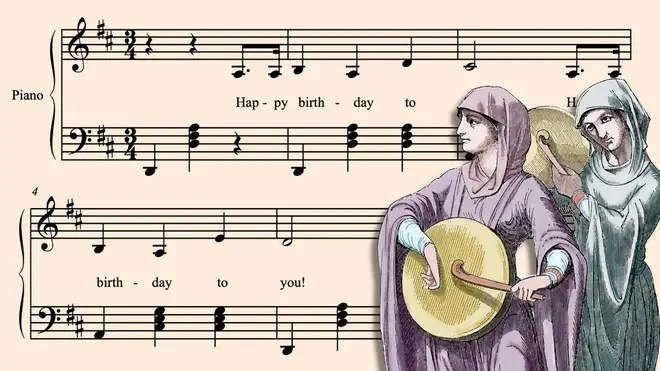On Air Now
Calm Classics with Myleene Klass 10pm - 1am
8 March 2024, 15:10

Many of the world’s most memorable memories were written by female composers. Here are some of the most famous examples.
You can sing these famous tunes. But could you tell us who the composer was? Join us as we take a look at some of history’s most iconic melodies, that happen to have been written by women.
For many amateur pianists, ‘Chopsticks’ is the first tune they learn on the piano.
It’s repetitive, catchy, and simple nature make it an easy tune for even the most novice piano players to master.
But while you know how it goes, did you know it was written by a 16-year old? The piece was created by British composer Euphemia Allen, who wrote ‘The Celebrated Chop Waltz’ in 1877 under the pseudonym Arthur De Lulu.
Read more: What is ‘Chopsticks’ – and why does it have so many variations?

The Celebrated Chop Waltz, by Euphemia Allen
In its first format, the tune of Happy Birthday was an American school teacher’s greeting song. Titled ‘Good Morning to All’, the song was written by two sisters, Mildred and Patty Hill, in the early 1890s.
The pair wrote the piece while they were teachers at Louisville Experimental Kindergarten School, with Mildred writing the lyrics, and Patty the melody.
It wasn’t until almost 20 years later that Patty’s tune first appeared with the Happy Birthday lyrics we know and love today.

Lang Lang plays Happy Birthday for Classic FM
For those watching British TV in the 2000s, Eliza Aria is now inextricably associated with the Lloyds banking advert. In fact, in 2010 it was revealed as the third most performed song in UK TV advertising.
But originally, the setting comes from the ballet Wild Swans composed by Soviet-born Australian composer and pianist, Elena Kats-Chernin. A short, charming vocalise for light, airy soprano voice, it’s a piece now steeped in nostalgia, and one that demands to be sung whenever one enters an echoing tunnel. There’s even a four-hands piano version, that Lang Lang performed a few years ago.

Elena Kats-Chernin - Eliza's Aria, from Wild Swans ballet
Also known as ‘Hush-a-bye baby on the tree top’, the 18th-century nursery rhyme is linked to two popular tunes.
The first is a variant of Henry Purcell’s 1686 quickstep Lillibullero, while the second second was composed 200 years later.
American actress Effie Crockett is credited as the second melody’s composer. She is said to have created the song in 1872 while minding someone else’s baby.
Her banjo teacher sent the music off to be published and Effie, concerned about what her father would think, requested her name to be published as Effie Canning, her grandmother’s last name.

Rock-A-Bye Baby
“...go round and round”, is a tune you’re most likely familiar with if you ever travelled on a bus as a child.
The popular children’s song was composed by Verna Hills at the end of the 19th century, and published in 1939.
It is suggested that the piece was written when motorised school bus journeys were growing longer and children needed to be kept entertained for this extra time spent travelling.

THE WHEELS ON THE BUS | Verna Hills || JHMJams Cover No.386